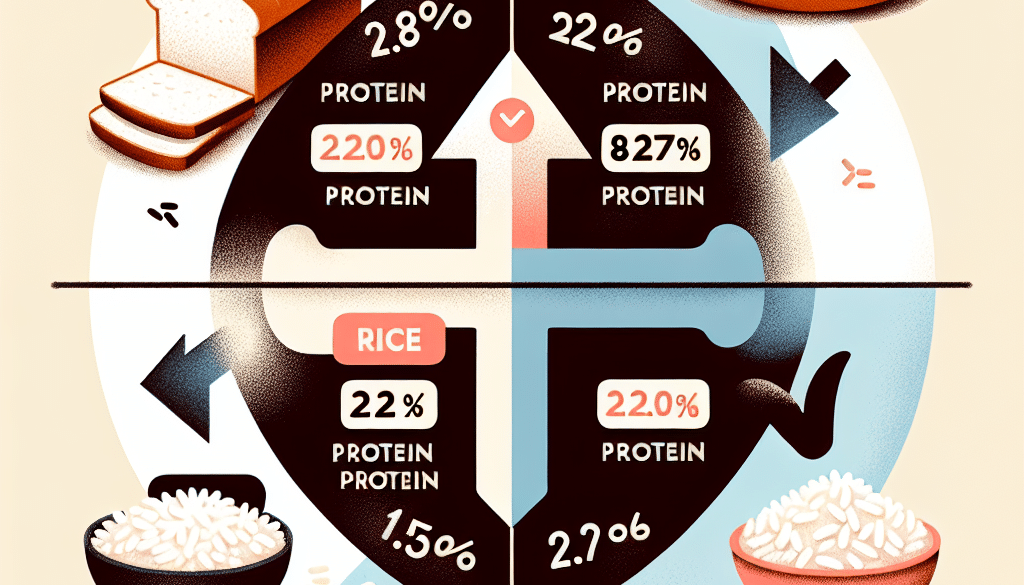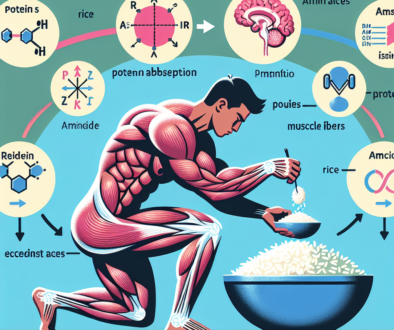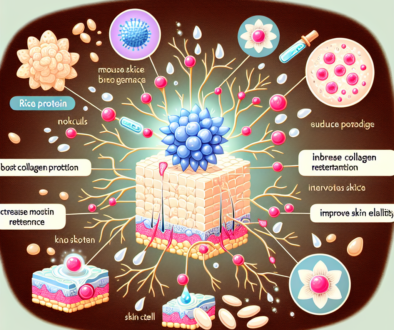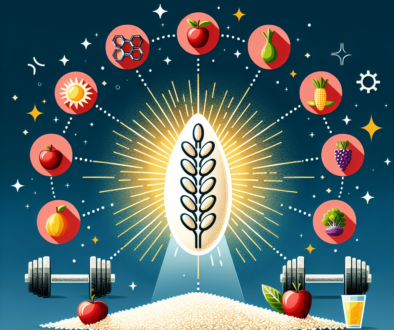Is Bread Or Rice A Better Source Of Protein?
-
Table of Contents
- Bread vs. Rice: Which Is the Superior Protein Source?
- Understanding Protein in Our Diet
- Nutritional Profile of Bread
- Nutritional Profile of Rice
- Comparing Bread and Rice for Protein Content
- Other Nutritional Considerations
- Case Studies and Statistics
- Conclusion: Making the Right Choice for Your Protein Needs
- Discover ETprotein’s High-Quality Protein Products
Bread vs. Rice: Which Is the Superior Protein Source?
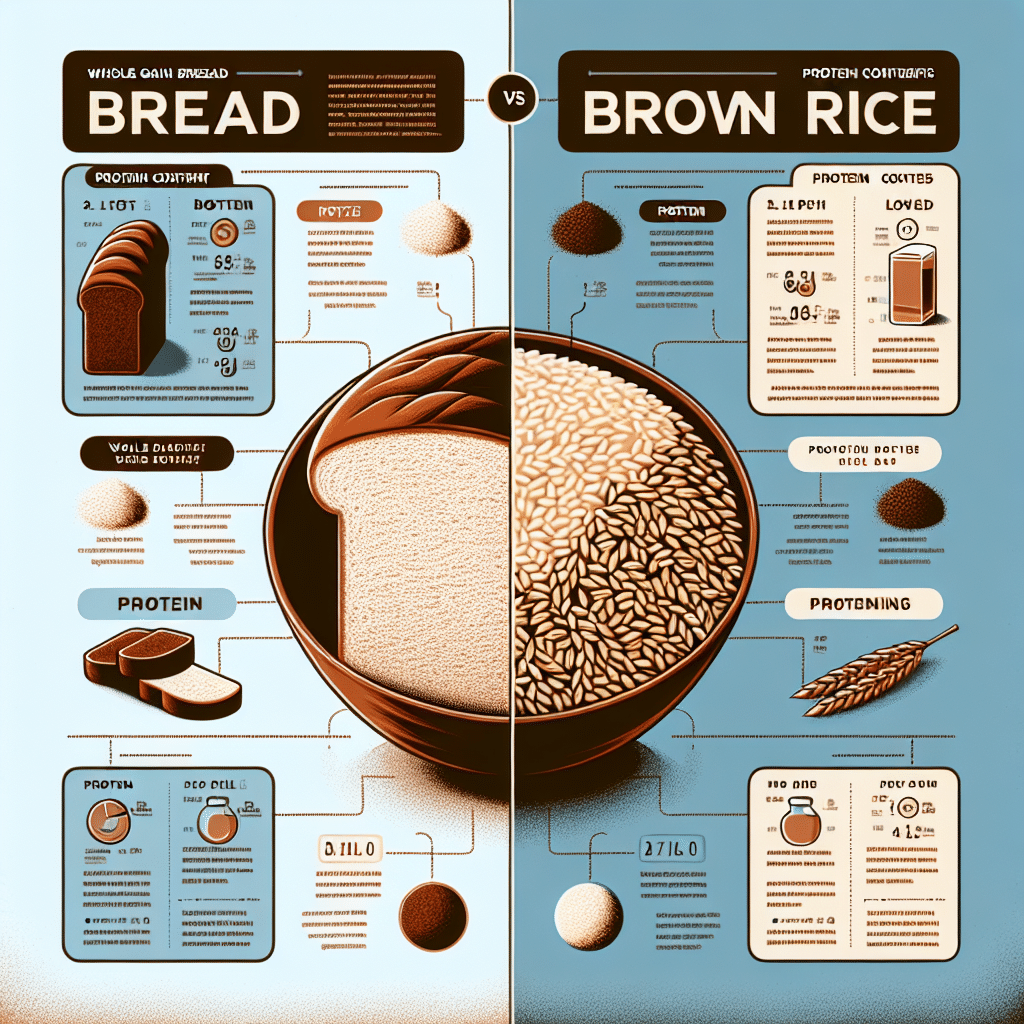
When it comes to choosing the best source of protein, the debate often boils down to common staples in our diet: bread and rice. Both are primary sources of carbohydrates, but they also contain protein, which is essential for building and repairing tissues, making enzymes and hormones, and supporting overall health. In this article, we will delve into the nutritional profiles of bread and rice, compare their protein content, and determine which one might be a better protein source for your dietary needs.
Understanding Protein in Our Diet
Protein is a macronutrient made up of amino acids, the building blocks of our body’s structure. The Recommended Dietary Allowance (RDA) for protein is 0.8 grams per kilogram of body weight per day for adults. However, individual needs may vary based on age, sex, physical activity level, and overall health.
Nutritional Profile of Bread
Bread, particularly whole grain bread, is a staple food in many cultures. It is primarily a source of carbohydrates but also provides a modest amount of protein. The protein content in bread can vary depending on the type of grain used and the addition of other protein-rich ingredients like seeds and nuts.
- Whole wheat bread: Approximately 2-3 grams of protein per slice.
- Multi-grain bread: Can contain up to 4-5 grams of protein per slice, depending on the variety of grains and seeds used.
It’s important to note that the protein in bread is not complete, as it lacks adequate amounts of certain essential amino acids. However, when paired with other protein sources like dairy or legumes, it can contribute to a well-rounded protein intake.
Nutritional Profile of Rice
Rice is another global staple, with white rice and brown rice being the most commonly consumed varieties. Rice also contains protein, but the amount and quality differ between types.
- White rice: About 2-3 grams of protein per cooked cup (around 200 grams).
- Brown rice: Slightly higher in protein, with about 3-5 grams per cooked cup.
Like bread, rice protein is incomplete. However, brown rice has a better amino acid profile compared to white rice. Combining rice with beans or other legumes can provide a complete protein source.
Comparing Bread and Rice for Protein Content
When comparing the two, it’s clear that neither bread nor rice should be your primary protein source. However, they can both contribute to your daily protein intake. Here’s a closer look at how they stack up against each other:
- Protein Quality: Both bread and rice lack certain essential amino acids, making their protein quality lower than that of animal products or soy. However, when part of a varied diet, they can still be part of a complete protein intake.
- Protein Quantity: Multi-grain breads and brown rice have higher protein content than their white counterparts. However, the difference is not significant enough to classify either as a high-protein food.
- Digestibility: Whole grains in bread and brown rice contain fiber, which can affect the digestibility and absorption of protein. However, fiber also offers numerous health benefits, including improved digestion and satiety.
Other Nutritional Considerations
When choosing between bread and rice, consider the other nutrients they provide. Whole grain bread and brown rice are rich in fiber, vitamins, and minerals, while white bread and white rice are often enriched with certain nutrients but lack the natural fiber and micronutrient diversity of their whole grain counterparts.
Case Studies and Statistics
Research has shown that diets rich in whole grains, like whole wheat bread and brown rice, are associated with a lower risk of chronic diseases such as heart disease, diabetes, and certain cancers. A study published in the American Journal of Clinical Nutrition found that replacing refined grains with whole grains and upping the total amount of grains led to improvements in gut bacteria and immune responses.
Conclusion: Making the Right Choice for Your Protein Needs
In conclusion, while both bread and rice contain protein, they should not be relied upon as primary sources of this macronutrient. Instead, they can complement a diet that includes a variety of protein sources. For those looking to increase their protein intake, other foods such as lean meats, fish, dairy, legumes, nuts, and seeds are more suitable options.
The key takeaways are:
- Both bread and rice provide protein, but in modest amounts.
- Whole grain bread and brown rice offer more nutrients and fiber than their refined counterparts.
- Combining bread or rice with other protein sources can help create a complete amino acid profile.
- Consider your overall diet and lifestyle when choosing between bread and rice for protein.
Discover ETprotein’s High-Quality Protein Products
If you’re looking to enhance your protein intake with high-quality supplements, consider ETprotein’s range of organic and vegan protein products. Their offerings include organic rice protein, pea protein, and various seed proteins, all characterized by a neutral taste and non-GMO, allergen-free attributes. With L-(+)-Ergothioneine purity over 98%, ETprotein caters to a diverse range of industries and dietary needs. Whether you’re involved in sports nutrition, weight management, or general health and wellness, ETprotein has a solution for you.
About ETprotein:
ETprotein, a reputable protein and L-(+)-Ergothioneine (EGT) Chinese factory manufacturer and supplier, is renowned for producing, stocking, exporting, and delivering the highest quality organic bulk vegan proteins and L-(+)-Ergothioneine. They include Organic rice protein, clear rice protein, pea protein, clear pea protein, watermelon seed protein, pumpkin seed protein, sunflower seed protein, mung bean protein, peanut protein, and L-(+)-Ergothioneine EGT Pharmaceutical grade, L-(+)-Ergothioneine EGT food grade, L-(+)-Ergothioneine EGT cosmetic grade, L-(+)-Ergothioneine EGT reference grade and L-(+)-Ergothioneine EGT standard. Their offerings, characterized by a neutral taste, non-GMO, allergen-free attributes, with L-(+)-Ergothioneine purity over 98%, 99%, cater to a diverse range of industries. They serve nutraceutical, pharmaceutical, cosmeceutical, veterinary, as well as food and beverage finished product distributors, traders, and manufacturers across Europe, USA, Canada, Australia, Thailand, Japan, Korea, Brazil, and Chile, among others.
ETprotein specialization includes exporting and delivering tailor-made protein powder and finished nutritional supplements. Their extensive product range covers sectors like Food and Beverage, Sports Nutrition, Weight Management, Dietary Supplements, Health and Wellness Products, and Infant Formula, ensuring comprehensive solutions to meet all your protein needs.
As a trusted company by leading global food and beverage brands and Fortune 500 companies, ETprotein reinforces China’s reputation in the global arena. For more information or to sample their products, please contact them and email sales(at)ETprotein.com today.

